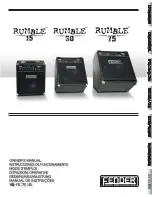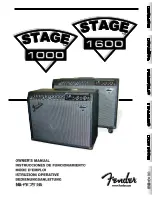
Page
53
6
FUNCTION SETTINGS
4) DAMPER EFFECT
When the damper pedal is depressed on an acoustic piano, all dampers are lifted up, allowing the strings to
vibrate freely. When a note or chord is played on the piano with the damper pedal depressed, not only will the
strings of the notes played vibrate, but also the strings of other notes, vibrating in sympathetic resonance. The
Damper Effect function of the ES6 digital piano attempts to simulate this phenomenon.
Step 1
Press and hold the TOUCH and TRANSPOSE buttons, then press the ORGAN button.
The LED indicators for the TOUCH, TRANSPOSE, and ORGAN buttons will start to fl ash, indicating that the
Damper Effect function has been selected.
The name of the function ‘dEF’ (Damper Effect) and the current settings will be shown in the LED display.
Step 2
Press the
T
or
S
VALUE/BALANCE buttons to increase or decrease the Damper Effect level to the
desired value.
The Damper Effect value can be set within the range of 1 to 10. Setting the Damper Effect to ‘Off’ will disable the
function entirely.
A Damper Effect value of ‘1’ produces a very subtle effect, while the maximum level of ‘10’ creates a stronger,
more pronounced resonance.
Step 3
Press one of the TOUCH, TRANSPOSE, SOUND SELECTION, EFFECTS, or REVERB buttons to exit
Damper Effect setting mode.
The LED indicators for the TOUCH, TRANSPOSE, and ORGAN buttons will stop fl ashing.
Any changes made to the Damper Effect setting will remain until the power is turned off.
When the power is turned off, the Damper Effect setting will return to the default value of ‘5’, however it is possible to
use the Memory Backup function to store the preferred Damper Effect value. Please refer to the instructions on page
62 for more information.
DAMPER EFFECT
Off
1
10
2
Press and hold both buttons
1
Press the ORGAN button
ES6̲EN.indd 53
2008/06/12 11:14:21
















































